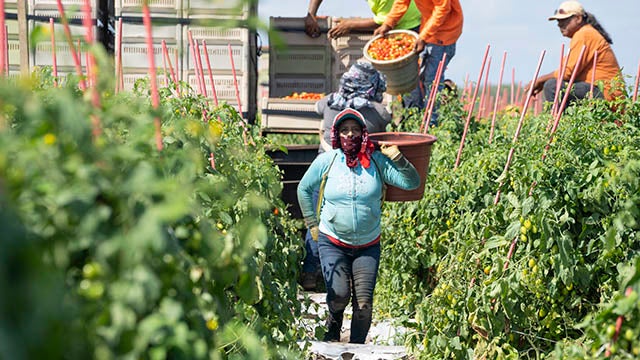In June of this year 46.7 million Americans—about one in seven—received benefits from the Supplemental Nutrition Assistance Program—SNAP. SNAP is, of course, the name of the program still called “food stamps” by many people.

Over the years, SNAP has been attacked by some conservative commentators. Ironically, these attacks have been based mainly on the growth in the number of beneficiaries during the last dozen years, despite that growth being largely an indicator of the weakness of the economy. As the Economic Research Service of the US Department of Agriculture just reported, SNAP has acted in this recession as it has in past recessions, “providing a vital safety net for low-income households to help as people work their way to greater self-sufficiency.”
Over the years, Congress and the executive branch have worked together to improve the administration of the program. SNAP grew during the Bush administration and has continued to grow under the Obama administration. In the former, it grew because the unequal economic growth of the aughts left millions of working families with wages below the poverty line, and because President Bush, with bipartisan support in the Congress, improved eligibility rules for documented immigrants (especially children) and for low-income working families. During the Obama years, SNAP has grown because the recession has driven millions into poverty, and because the president and Congress made it easier for unemployed adults to get benefits. As unemployment hopefully goes down in the future, participation in the SNAP program will also go down; the program is countercyclical, growing when the economy is weak, falling when the economy strengthens and people go back to work.
The result is a fundamentally strong program with an unusual history of bipartisan support that is doing what it’s supposed to do: help people when they need help; and pull back in better economic times when they have jobs and family-supporting wages. SNAP is probably the most important part of the safety net for the poor and lower-income working families.
SNAP responds when the national economy or a state or area economy is in trouble; and reacts quickly and robustly to these economic problems, as seen most dramatically in the 2008-2012 period. It reduces hunger and food insecurity by providing very low-income people desperately needed assistance to purchase food through normal commercial channels. It provides benefits which are so urgently needed by families that they are spent quickly—97 percent of benefits are redeemed by the end of the month of issuance—thereby bolstering local economies.
SNAP also goes to the neediest Americans—93 percent of benefits go to households with incomes below the poverty line. It reaches vulnerable populations, like households with low-income working adults, senior citizens, the disabled, and children. It relieves pressure on overwhelmed food banks, pantries, and religious congregations, who are the first to explain they would be unable to meet added demand that would come from weakening SNAP. And finally, it is supported by the public: a recent poll released by the Food Research and Action Center found that three out of four voters think that cutting SNAP is the wrong way to reduce spending.
Support for SNAP in the poll is high across political affiliation, and proposals for major cuts in SNAP are at odds with every bipartisan deficit proposal discussed in the past year—Simpson-Bowles, Rivlin-Domenici, the Gang of Six, and others—as well as the Budget Control Act, which protected SNAP from cuts. Notwithstanding the strong public support, Congress and the Administration continue to look at sensible and responsible ways to reduce program costs without decreasing benefits for those who qualify for them, and are also looking for ways to improve access to healthy and nutritious foods.
Congress has a long history of bipartisan support for SNAP, with pairs from George McGovern and Bob Dole to Tom Harkin and Pat Roberts leading the way. That bipartisanship has become shakier during last few years, but it is sorely needed in order to preserve the program. Without it, the SNAP would be far weaker and less comprehensive, resulting in far more severely hungry people. Without SNAP, millions would have to rely almost exclusively on food banks and other private charities, which are critical parts of the safety net, but not sufficient to deal with the significant needs of poor and working Americans.
Finally, it is worth noting that the US has the most extensive anti-hunger and government supported nutrition and feeding programs in the world—which is certainly not a bad legacy for our country.
Dan Glickman is the head of the Institute’s Congressional Program. He is also Chairman of the Food Research and Action Center, an anti-hunger advocacy group based in Washington. Previously, he served as Secretary of the US Department of Agriculture, where he administered the SNAP program.

